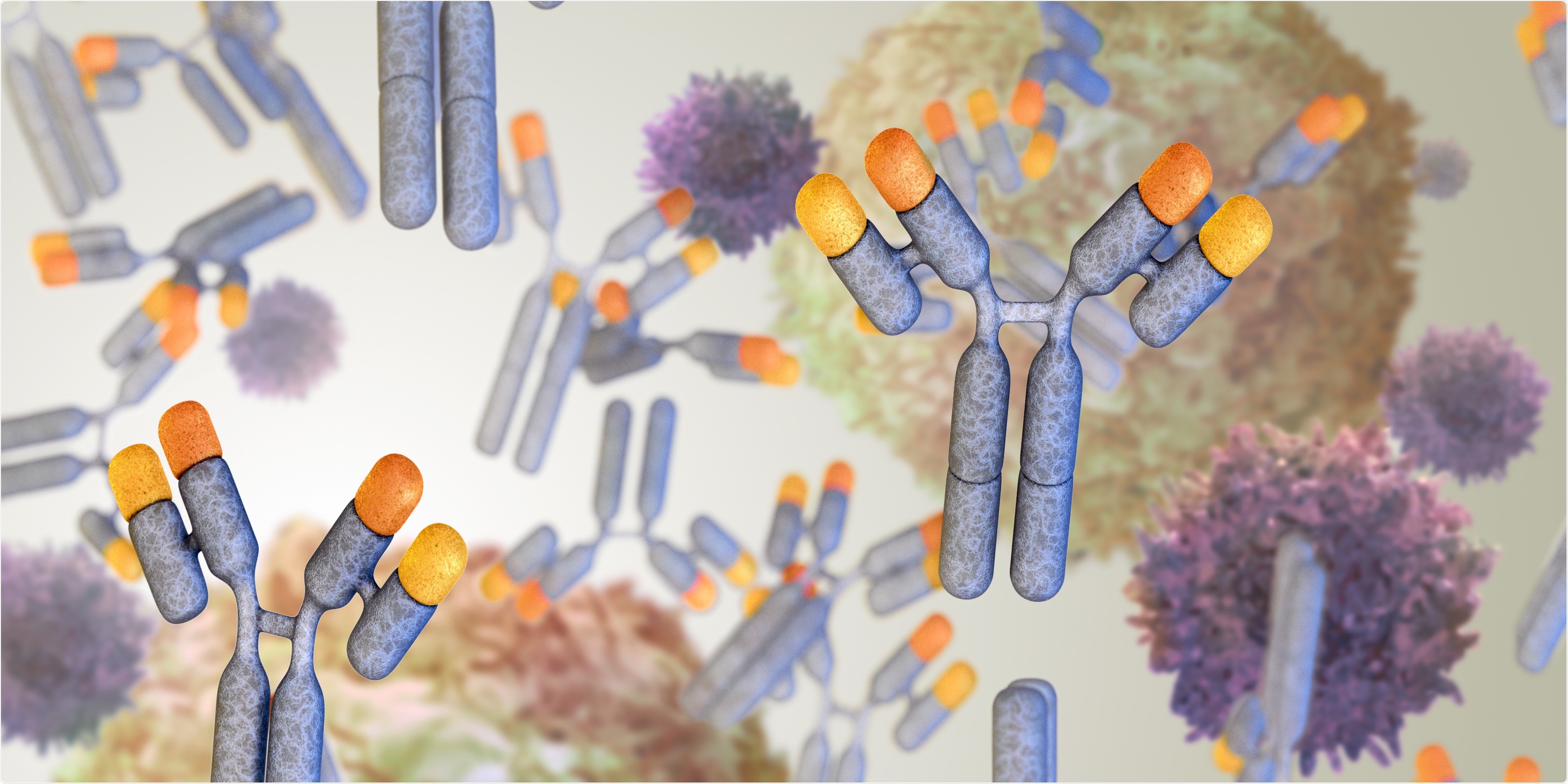An interview with Tracey Mullen, Chief Operating Officer at Abveris.
Please give an overview of the state of immuno-oncological therapeutic antibodies being researched and on the market.
The growing trend of implementing immunotherapy into oncology has resulted in a variety of new therapeutic modalities for cancer treatment options, many of which capitalize on the use of antibodies. First-generation immuno-oncological antibody therapeutics involved checkpoint modulators targeting common T-cell checkpoints such as PD-1 and CTLA-4. In fact, a quick review of the immuno-oncological clinical landscape unveils approximately 120 checkpoint inhibitors currently in clinical trials!

Image credits: Sartorius
Next-generation therapeutics aim to combine the immunotherapeutic benefits of targeting checkpoints in concert with other non-immune chemotherapeutic strategies to provide a targeted assault on the tumor microenvironment.
Therapeutics of this nature capitalize on the exquisite specificity of antibody biologics to directly target tumor cells with cytotoxic agents (for example, ADCs) or indirectly target tumor cells by actively recruiting other immune cells (such as T-cells and macrophages) via multi-specific antibody formats. Even more precise targeting is on the horizon: for example, technologies that limit antibody activity to the tumor microenvironment and reduce cytotoxic activity in healthy tissue, resulting in a holistic attack on tumor cells with minimal adverse effects. Such combination immunotherapies offer great promise for patients that do not respond well to traditional chemotherapy.
What applications are immuno-oncological therapeutics approved for in a clinical setting? What are the advantages and limitations in comparison to other treatment methods?
Most of the currently approved immuno-oncological therapeutics aim to enhance the immune response rather than directly target a specific tumor antigen. Through immune system activation, immuno-oncological therapies take advantage of benefits such as breadth of response and memory to provide a more specific, targeted treatment option for patients. For that reason, immuno-oncological therapies have a wide application across many types of cancers, including, but not limited to, melanomas, carcinomas, and lymphomas. In general, immuno-oncological therapies tend to benefit patients with late-stage disease, though recent clinical trials involving earlier immuno-oncological treatments are also promising.
Compared to traditional chemotherapy, immuno-oncological therapies provide a more indirect attack on tumor cells which generally results in fewer side effects, making the treatment itself more tolerable from a quality of life perspective. Nevertheless, immuno-oncological treatment options tend to suffer from efficacy issues and patient-to-patient variability, suggesting additional development is required.
What services does Abveris offer in the immuno-oncological antibody research space?
Abveris is a contract research organization specializing in critical reagent and therapeutic antibody discovery for a wide range of targets, including those in the immune-oncology research space. Our discovery workflow capitalizes on a proprietary hyperimmune mouse model that has been engineered for epitopic diversity and optimized response to traditionally difficult targets. We leverage a number of proprietary immunization strategies for tough target antibody discovery along with a suite of premium downstream characterization assays to ultimately deliver a panel of fully characterized lead molecules ready for development.
Due to our unique combination of engineered mouse models, proprietary immunization techniques, and premium high-throughput and high-content screening capabilities, we specialize in high homology targets, constrained epitope targeting, and tough cell surface targets, all of which exist within the immuno-oncological antibody research space.
How does Abveris identify and characterize candidate molecules to ensure superior reactivity and functionality while maintaining monoclonality?
Abveris offers two different workflows for discovery purposes: traditional hybridoma discovery, and single B-cell screening enabled by the Berkeley Lights Beacon. Our traditional hybridoma discovery approach triages antibody candidates in a high-throughput manner by specificity, affinity, and oftentimes functionality early in the workflow. Monoclonality is confirmed by sequencing lead candidates and recombinantly expressing the antibody or by subcloning hybridoma cell lines, and the characterization process is repeated to ensure that the superior reactivity and functionality is preserved.
Our single B-cell screening workflow takes a very different approach, in which single IgG-secreting B-cells are isolated directly from an immunized animal and are fully characterized individually on the Beacon prior to export and sequencing. This workflow offers high-resolution screening in unprecedented timelines while maintaining monoclonality throughout the process.
How has the Sartorius platform helped to advance monoclonal antibody production within Abveris?
Our Sartorius iQue platform is one of our primary workhorses in the lab for all cell-surface target antibody discovery. As the antibody industry advances and trends toward complex cell-surface targeting, it becomes imperative for successful discovery engines to incorporate cell-based screening early on, especially in cases where reliable recombinant antigens are difficult or even impossible to generate.
Increasingly, functional screens amenable to high-throughput formats are being incorporated into discovery workflows earlier on, necessitating high-content flow cytometry screening capabilities. The Sartorius platform enables us to incorporate such screens as early as necessary to ensure successful project execution and delivery.
How does this compare to previous methods?
Previously, Abveris would rely on lower-throughput flow cytometry screening on a limited number of antibody candidates that had been initially triaged through other methods, such as ELISA. In situations where a recombinant extracellular domain protein was an accurate representation of the cell surface target, this method would work well, but unfortunately this was not always the case. Oftentimes, we would see attrition between the ELISA screening and on-cell screening results, resulting in a decreased pool of antibody candidates to choose from.
With the ability to screen a large number of plates via high-throughput flow cytometry, we are now able to bring relevant screening formats predictive of downstream success forward in the discovery process. Additionally, as the industry trends toward a “function first” screening mentality, the Sartorius iQue, paired with our hyperimmune mouse model, will allow us to stay at the cutting edge of antibody discovery to deliver a diverse panel of functionally relevant binders in industry-leading timelines.
Why is high throughput so important to antibody discovery?
Regardless of the method of antibody discovery, whether it be a traditional hybridoma-based in vivo approach or an in vitro library-based approach, the starting diversity of the antibody pool will be quite high. One of the biggest challenges antibody discovery scientists face, therefore, is reasonably screening through the massive pool of potential antibody candidates in the fastest timeline possible to accelerate the drug discovery timeline. High-throughput screening enables small-scale, rapid characterization and identification of target-specific antibodies, which can then be expanded for further characterization and lead identification.
What new applications can be researched with the Sartorius platform?
The Sartorius platform is constantly evolving to provide higher resolution screening while still maintaining throughput. At Abveris, we’ve leveraged the Sartorius iQue to screen not just for cell-surface binding, but also antibody function. Examples of such assays include ligand blocking, apoptosis induction, and internalization. With 6 channels available, one can envision the ability to run a host of more complex multiplexed assays as well. We plan to continue to use the iQue for some of our more standard characterization assays—such as on-cell apparent KD analysis—and hope to explore more complex screens as the antibody field dictates.
What is the future of immuno-oncological therapeutic targets at Abveris?
The future of immuno-oncological therapeutic targets at Abveris will be primarily dictated by our partners, but we hope to continue to provide premium antibody discovery services for any and all immuno-oncological targets. With the popularity of bi-specific and other multi-specific formats, as well as chimeric antigen receptors (CARs) that rely on antibody-based specificity, the breadth of possible targets in the immuno-oncological space is staggering and we aim to help our partners convert these complex ideas into successful pre-clinical and clinical trials.
Where can readers find more information?
About Tracey Mullen
Tracey Mullen is a chemical-biological engineer from MIT who began her career as an Antibody Discovery Scientist at a startup contract research organization specializing in in vivo antibody discovery. In 2013, she joined the Antibody Discovery team at Biogen where she helped implement the technology transfer of the Adimab yeast display platform for antibody discovery and engineering. Throughout her tenure at Biogen, Tracey worked to optimize the in vitro discovery of antibodies to tough targets, including leveraging the Adimab platform to generate antibodies against GPCRs. In June of 2018, Tracey joined Abveris as the Director of Antibody Discovery Operations, where she managed project design and development for in vivo discovery projects. She is now the Chief Operating Officer at Abveris, a premium antibody discovery service partner boasting industry-leading timelines and cutting-edge technologies.